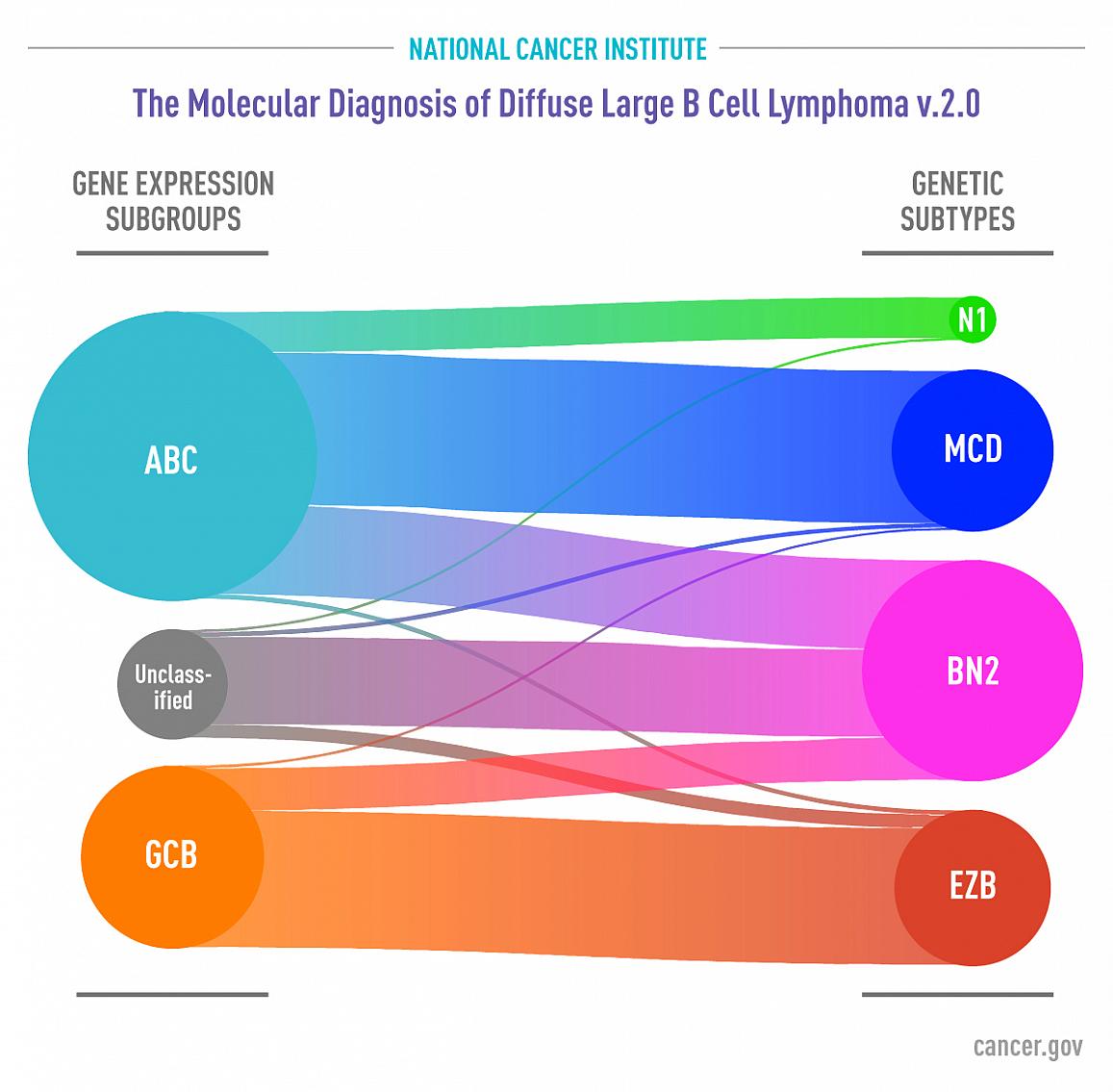IRP study revises molecular classification for most common type of lymphoma
In a new study, researchers identified genetic subtypes of diffuse large B-cell lymphoma (DLBCL) that could help explain why some patients with the disease respond to treatment and others don’t. The study, led by researchers in the Center for Cancer Research (CCR) at the National Cancer Institute (NCI), part of the National Institutes of Health, with additional authors from several institutions around the world, was published online April 11, 2018, in The New England Journal of Medicine.
DLBCL is the most common type of lymphoma. Although it can be aggressive, it is potentially curable, and in some patients treatment eliminates the disease. However, researchers still don’t have a full understanding of why some lymphomas of this type respond to treatment and others don’t. The standard treatment for the disease is a combination of chemotherapy drugs plus rituximab, a drug known as a monoclonal antibody.
Several years ago, researchers defined two major subgroups of DLBCL that arise from different cells of origin and that have different patterns of gene activity. They found that patients with activated B-cell-like (ABC) DLBCL have about a 40 percent average survival rate, while those with germinal center B-cell-like (GCB) DLBCL have about a 75 percent average survival rate. But even in the GCB subgroup, many patients experience disease relapse after treatment.
“The first question we wanted to tackle was whether there were other molecular features of the tumors that could help us explain why some people were well-served by chemotherapy,” explained Louis M. Staudt, M.D., Ph.D., of NCI’s CCR, who led the new study. “And the second, related question was, if we could understand who was not responding well to treatment, could we understand the genetics of these tumors to suggest new potential therapies beyond chemotherapy? The answer to both questions was ‘yes.’”

Subgroups of DLBCL by gene expression (left) defined several years ago. Genetic subtypes identified in the new study (right) that each share a group of genetic aberrations. Curved connectors indicate relationships between the subgroups and subtypes.
This page was last updated on Friday, January 21, 2022